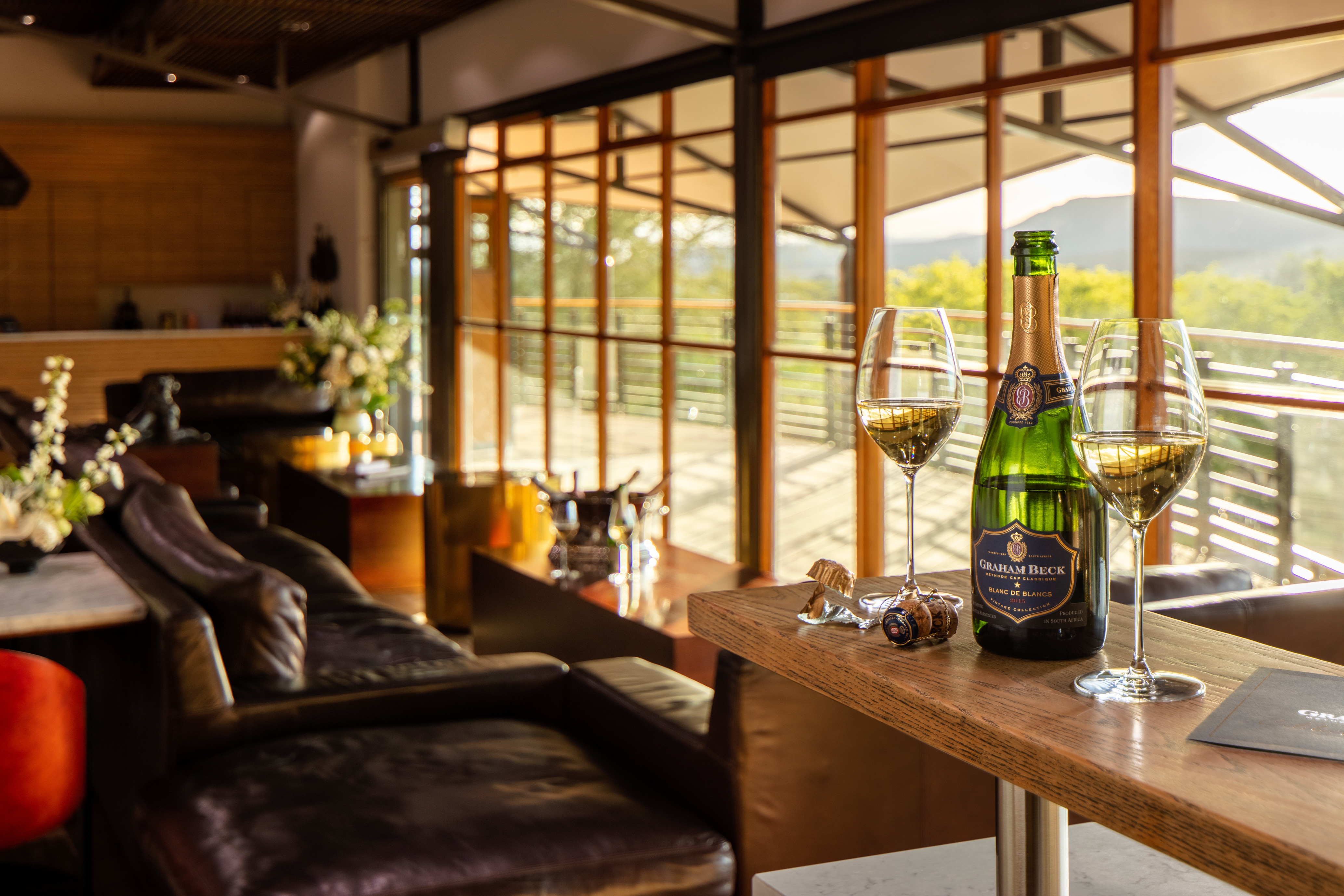Ensconced between the Langeberg and Riviersonderend mountain ranges, Robertson happens to be the longest wine route in South Africa, which includes the towns of Robertson, Bonnievale, McGregor and Ashton following Route 62.

“It is located completely in its own unique transition biosphere zone between two distinct ecosystems of the Klein Karoo and the coastal belt,” relays Pieter Ferreira, cellarmaster of Graham Beck, the renowned Cap Classique house. “This makes it a fragile yet fascinating area but at the same time with challenging semi-arid conditions and weather patterns. Soils range from the rich limestone deposits to shale and red Karoo soils. Along the Breede River you will find slightly more alluvial deposits.”
Another Cap Classique producer in the area, John Loubser of Silverthorn Wines is likewise intrigued by Robertson’s terroir and has done a fair amount of digging into its geological history.
“I love collecting rocks, bones, stone tools and fossils,” says Loubser. “ I wanted to know why we don’t find any dinosaur fossils in Robertson, even though not far away in the Great Karoo you find there are plenty.
“I contacted a palaeontologist. He said the explanation is simple: the oldest dinosaur fossils in South Africa are roughly 250 million years old. Whereas the soils in Robertson, which are part of the Bokkeveld shale group, are 400 million years old…our soils predate dinosaurs by 150 million years.
“We started finding fascinating fossils in our area… sea shells, fish fins and sea ferns. 400 mya the entire Western Cape was covered by the ancient Agulhas sea.”
It’s strange to think of this arid valley as underwater; a low-rainfall region wine-growing would not be possible without the lifeblood of the Breede River. Another essential cooling element are the south-east winds that blow off the Indian Ocean and tunnel into the valley.
The ghost of the ancient ocean is also the key to the seams of limestone found in the region, unusual for South Africa. These soils are crucial for the production of fine Cap Classique and chardonnay; a clue to why South Africa’s most famous bottle-fermented sparkling brand has long been in production here.
“Robertson has three secrets,” says Ferreira. “The richest natural occurrence of limestone deposits in the Cape winelands; temperate climate with warm days and cold nights, the highest exchange of its kind; then without a doubt, sunshine.”
In its nine official wards, Robertson has a diversity of various geographical pockets. Historically like many interior wine regions, Robertson grew white grapes for brandy production. As is still the practice today, however this has ensured a tradition of skilled white winemaking and established vineyards. Colombar, chenin blanc and sauvignon blanc are the most planted whites, though chardonnay as discussed is arguably the most important. Shiraz and cabernet sauvignon are increasingly appreciated from the region, too. While the flat plains provide relatively fertile growing conditions suitable for high yields, and therefore the ability to reinvest in the region.
“Robertson has certainly become the main hub for the sourcing of chardonnay for Cap Classique styles in the Cape,” shares Ferreira. “It is commonly known that well over 20 producers are doing so.
“The interest in Cap Classique in Robertson is also rapidly growing with 10 active producers. Specialists among the group are Silverthorn, Paul René and Graham Beck and well supported by Weltevrede, Bon Courage, DeWetshof, Van Loveren, Viljoensdrift, Lords and Bemind wines.”

Ferreira notes that in semi-arid conditions there are no climate change doubters in the region, and thus the approach to water management is highly regulated and ‘world class’ as the region gets far less than 300mm of rain a year. “Graham Beck has even switched to night harvesting since 2021 to benefit from the cool nights and this has tremendously improved the quality of the grapes.”

Sustainability and regenerative farming methods are hot topics, says Ferreira. The region is also a part of the GenZ programme for research and development of new clones and rootstock combinations that will be more resistant to heat and less water. “There are also trials being done at DeWetshof using the natural fauna and flora as cover crops, which is very innovative. Workshops are held regularly and the results are shared with the farmers.
“There still remains a misconception about the warm climate of Robertson. I am happy to report – yes, it is warm, but I can assure you all that there are much warmer pockets during harvest and summer in the so-called cooler regions and wards throughout the Cape winelands.”
So what does the future hold for Robertson? “I think it is like our sunshine, the future is bright! The late Graham Beck was known to say “there is only one son and that is RobertSon!”
Malu Lambert